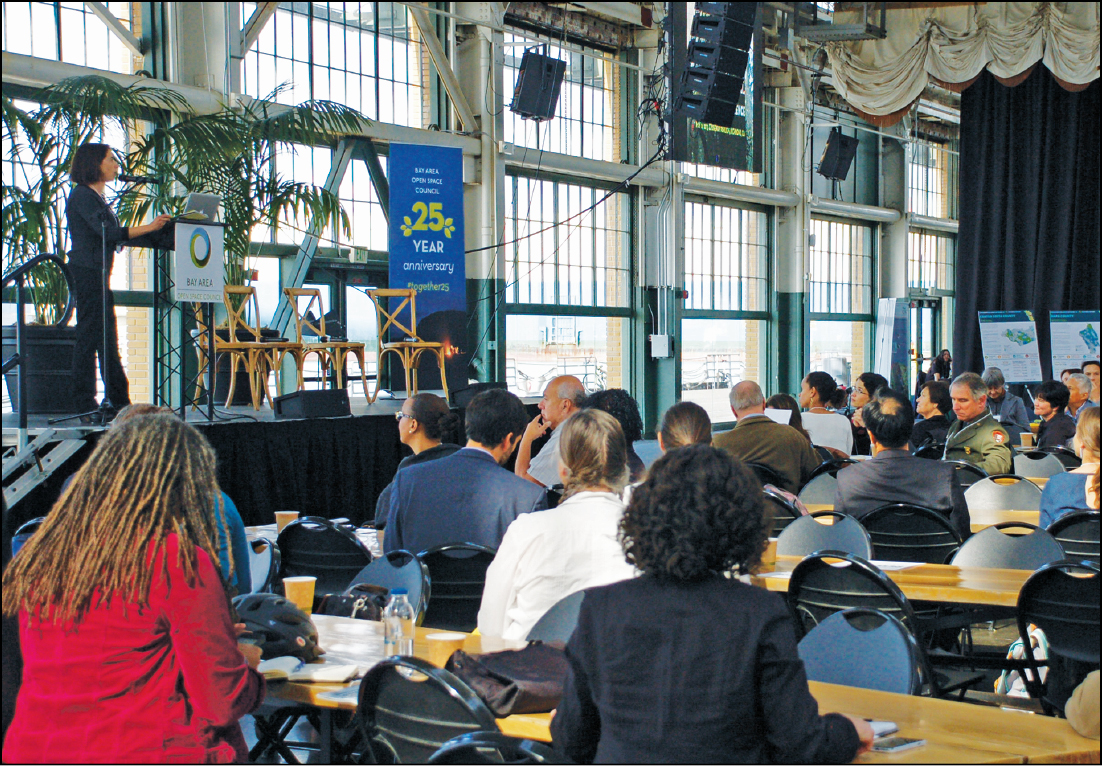Bay Area Open Space Council Commemorates a Quarter Century
More than 400 “outside voices” gathered inside the Craneway Pavilion in Richmond, on May 14, to participate in the 2015 Open Space Conference and celebrate the 25th anniversary of the event’s host, the Bay Area Open Space Council.
With a backdrop of the San Francisco Bay, access to the Bay Trail right outside the building, and a national historic park next door, the pavilion was an apt location for “a roomful of people who love using their outdoor voice,” noted Annie Burke, the council’s deputy director.
Although much has changed since the council first formed, the need to connect communities with open space still remains. “We need to continue our work to make sure that all the residents in the state can take advantage of the funding that we use to make lands better,” said Jenn Fox, outgoing executive director of the council.
With the conference slogan in mind — “Try. Learn. Repeat.” — natural space advocates took the stage to discuss ways to improve community engagement, funding, and partnerships, with the overarching goal to preserve and protect open space and working lands.
The first panel, with speakers that included Kaiser Permanente community benefit health manager Erica Browne and Richmond-based Pogo Park founder Toody Maher, focused on strategies to draw communities outdoors. One new community-building effort is called Outdoor Voice, an Open Space Council initiative to create a strong constituency for Bay Area parks and land conservation by signing up at least 10,000 subscribers before June 2016.
In addition to community support, open space preservation needs financial support.
Although Bay Area voters have been willing to pass local measures for green spaces, sources of national-level funding are dwindling, noted Robert Doyle, the general manager of the East Bay Regional Park District.
However, two new potential open space resources have been introduced to the California legislature this year. The meeting’s keynote speaker, Senate President Pro Tem Kevin de Leόn, spoke about the Safe Neighborhood Parks, Rivers, and Coastal Protection Bond Act of 2016 (Senate Bill 317) which would put a measure on next year’s ballot that, if passed by voters, would authorize the issuance of $2.45 billion in bonds to finance sustainable community projects, wildlife conservation, and create or expand safe neighborhood parks in underserved communities. In addition, Richmond-based Assemblymember Tony Thurmond introduced Assembly Bill 932, a bill that would allow the Department of Parks and Recreation to sponsor a specialized license plate program for helping to fund local park and recreation programs.
But money isn’t all that matters; also important are the partnerships among the patchworked stewardships of open space areas. In the dry days to come, these collaborative efforts will need to more efficiently manage the water that these lands both require and sustain. “We need to turn ourselves into a 21st century state that manages water in a new way,” said Brian Stranko, director of the California Water Program for The Nature Conservancy.
The meeting concluded with an introduction of the incoming executive director of the Open Space Council, Deb Callahan, a seasoned environmental policy leader.
Elizabeth Devitt is a freelance science writer based in Santa Cruz.
